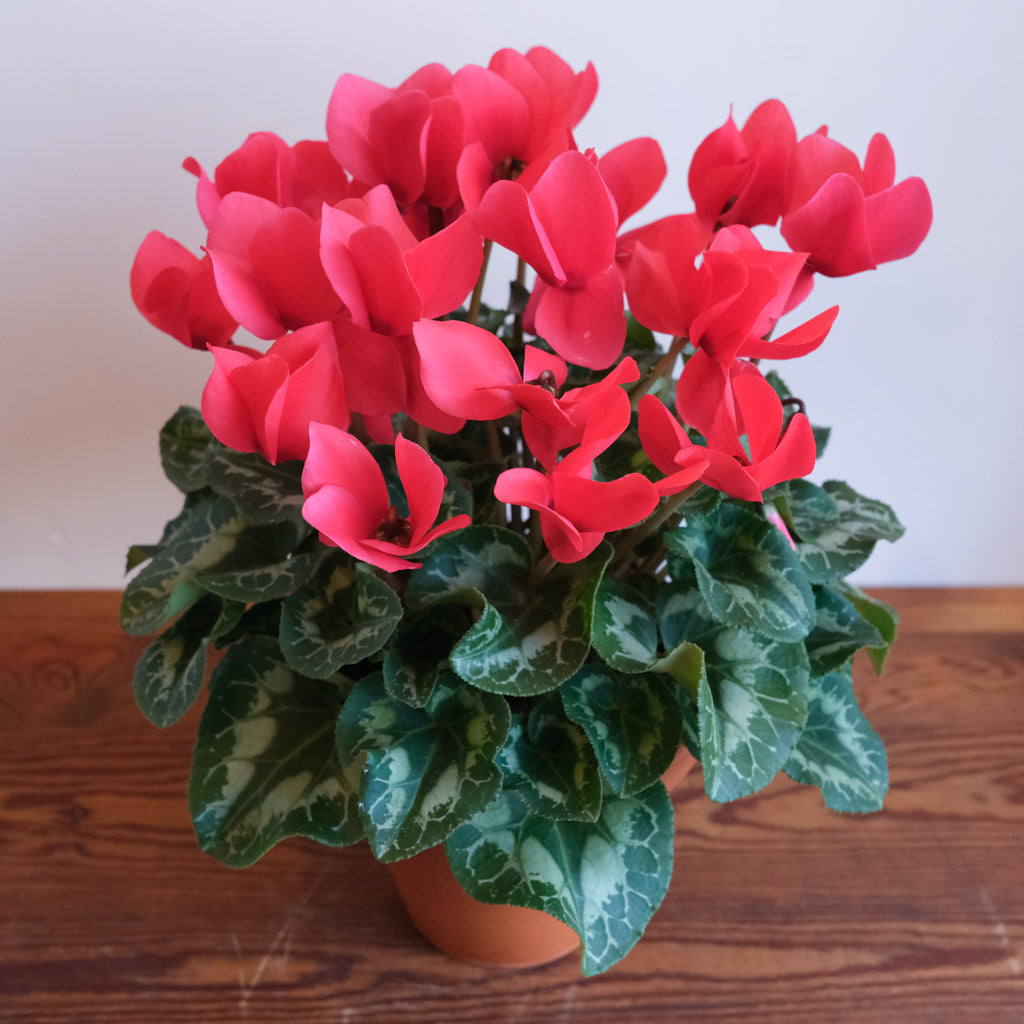
H2 Subheading: The Story Behind the Name
The name “Cyclamen” itself is a testament to its unique beauty and allure. Derived from the Greek word “kuklos,” meaning “circle,” it aptly describes the flower’s circular petals that curl gracefully inward. This circular motif is a recurring theme throughout the plant’s various species, adding to its distinctive charm.
The genus Cyclamen, belonging to the Primulaceae family, encompasses a diverse range of species, each with its own captivating qualities. From the delicate Cyclamen persicum, commonly known as the Persian cyclamen, to the vibrant Cyclamen coum, also referred to as the winter cyclamen, the genus boasts a wealth of floral diversity.
H2 Subheading: A Symphony of Colors and Shapes
Cyclamen flowers are a visual spectacle, showcasing a palette of vibrant colors that range from the softest pinks and whites to the deepest purples and reds. The petals, often adorned with delicate markings or contrasting hues, create a captivating interplay of color and texture.
The flowers are typically held aloft on slender, arching stems, adding to their graceful appearance. The leaves, which are often heart-shaped or rounded, may be variegated or solid in color. Some species exhibit striking foliage patterns, further enhancing their ornamental value.
H2 Subheading: A Dance of Light and Shadow
The delicate nature of cyclamen flowers makes them particularly susceptible to the effects of light. They thrive in bright, indirect light, but can tolerate some shade. When exposed to excessive direct sunlight, the petals may become scorched or fade.
The interplay of light and shadow on cyclamen flowers creates a mesmerizing effect. As the sun moves across the sky, the petals seem to dance and shimmer, casting intricate patterns on the surrounding surfaces. This dance of light and shadow adds a touch of magic to the overall appearance of the plant.
H2 Subheading: A Symbol of Resilience and Renewal
Despite their delicate appearance, cyclamen flowers are remarkably resilient. They are capable of withstanding harsh winter conditions and can even bloom during the coldest months of the year. This ability to thrive in challenging environments makes them a symbol of resilience and renewal.
The cycle of growth and bloom in cyclamen plants is a testament to their resilience. After the flowering period, the plants enter a dormant phase, during which they conserve energy and prepare for the next season’s growth. When the time is right, the plants emerge from dormancy and begin to produce new leaves and flowers, once again captivating the hearts of garden enthusiasts and flower lovers alike.
H2 Subheading: A Culinary Delight
Beyond their ornamental beauty, cyclamen flowers are also edible. The tubers of certain cyclamen species, such as Cyclamen purpurascens, are a delicacy in some regions of the world. They are often cooked or pickled and enjoyed for their unique flavor and texture.
While the tubers are edible, it is important to note that not all cyclamen species are safe to consume. Some species contain toxic substances, so it is essential to exercise caution and properly identify any cyclamen plants before consuming any part of them.
2. Cyclamen: A Symbol of Rebirth and Renewal
In the realm of botanical wonders, few flowers can match the delicate elegance and symbolic significance of the cyclamen. With its upturned petals and vibrant colors, this enchanting bloom has captivated hearts and minds for centuries. As a symbol of rebirth and renewal, the cyclamen has found its place in various cultures and traditions.
A Botanical Marvel
Cyclamen, a genus belonging to the Primulaceae family, is native to Europe, Asia, and North Africa. These perennial plants are prized for their unique floral structure and vibrant colors. The petals are typically curved backwards, creating a graceful and almost dancer-like appearance. The flower colors range from soft pastels like pink and white to bold shades of purple and red, adding a touch of whimsy to any garden or indoor space.
A Symbol of Rebirth
The cyclamen’s association with rebirth and renewal can be attributed to its blooming season. In many regions, the plant flowers during the winter months when other plants are dormant. Its cheerful blossoms emerge from the cold ground, bringing a sense of hope and optimism. This resilience and ability to thrive in challenging conditions have made the cyclamen a powerful symbol of renewal and overcoming adversity.
Cultural Significance
The cyclamen has held cultural significance in various societies throughout history. In ancient Greece, the plant was associated with the goddess Aphrodite, who was often depicted with cyclamen adorning her hair. The Romans believed that the cyclamen could ward off evil spirits and was used in healing rituals. In modern times, the cyclamen continues to be a popular choice for floral arrangements and gifts, often symbolizing new beginnings, good luck, and heartfelt wishes.
Growing and Caring for Cyclamen
While cyclamen are relatively easy to care for, they do have specific requirements to ensure optimal growth and flowering. They prefer cool temperatures and bright, indirect light. Regular watering is essential, but care should be taken to avoid overwatering. Providing a well-draining potting mix will help prevent root rot. With proper care, cyclamen can bloom for several weeks, adding a touch of beauty to any indoor or outdoor space.
The Delicate Dancer
The cyclamen, with its graceful form and vibrant colors, truly deserves its title as Nature’s Delicate Dancer. This enchanting flower has captured the hearts of people for centuries, serving as a symbol of rebirth, renewal, and hope. Whether admired in a garden or cherished as a houseplant, the cyclamen continues to inspire and delight with its beauty and resilience.